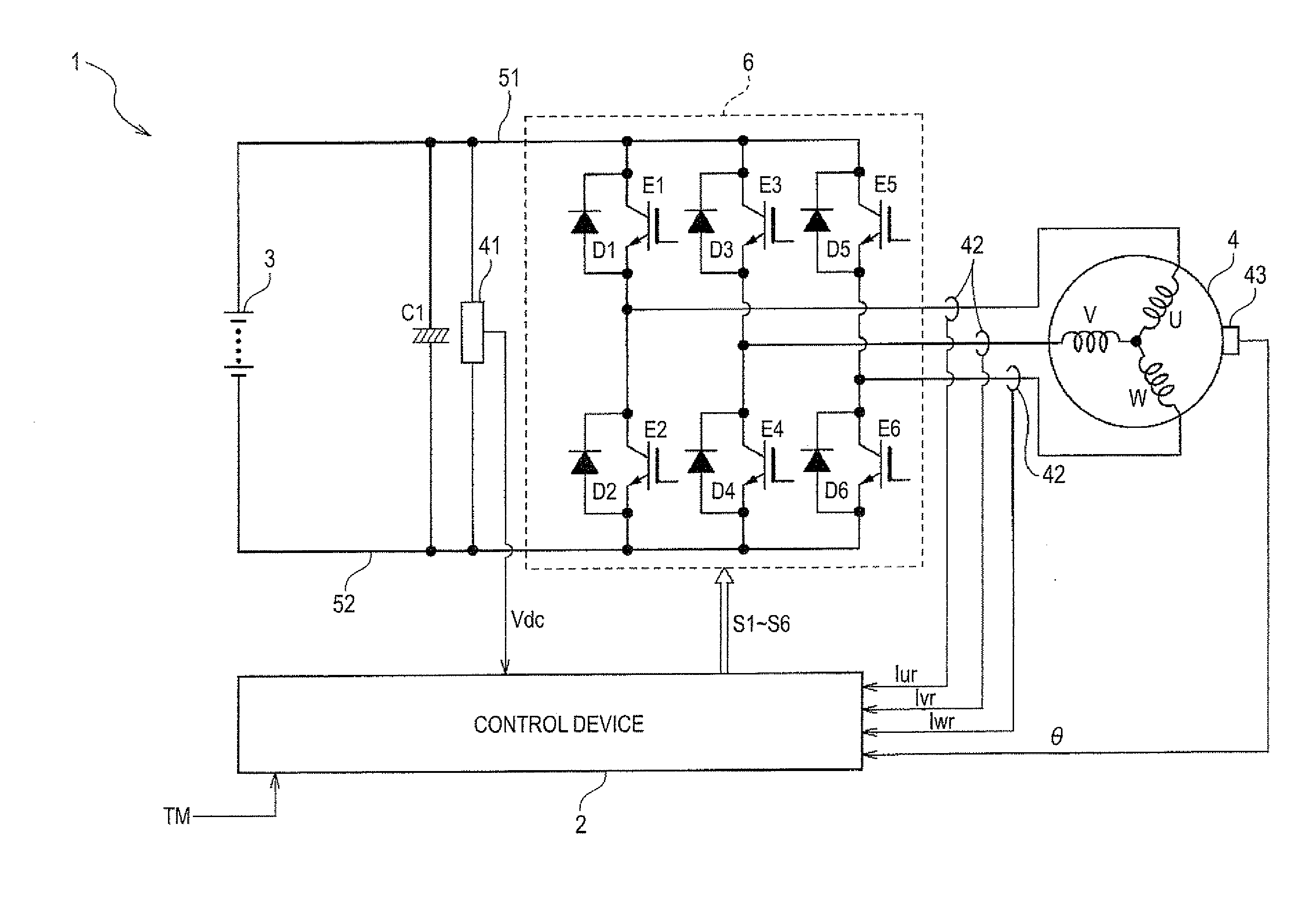Control device of motor driving apparatus
a control device and motor technology, applied in the direction of motor/generator/converter stopper, dynamo-electric gear control, dynamo-electric converter control, etc., can solve the problems of increasing the field adjustment command value in the direction, insufficient difficult to end the square wave control, so as to prevent a rapid change in the field adjustment command value, reduce the voltage index, and prevent the effect of rapid change of curren
- Summary
- Abstract
- Description
- Claims
- Application Information
AI Technical Summary
Benefits of technology
Problems solved by technology
Method used
Image
Examples
Embodiment Construction
[0034]First, exemplary embodiments of the invention will be described with reference to the accompanying drawings. As shown in FIG. 1, in this embodiment, a case in which a motor driving apparatus 1 drives an interior permanent magnet synchronous motor 4 (IPMSM: hereinafter, simply referred to as a “motor 4”), which is an AC motor operated by a three-phase AC, will be described as an example. The motor 4 is configured so as to be operated as a power generator, if necessary. The motor 4 is used as a driving force source for, for example, an electric vehicle or a hybrid vehicle. The motor driving apparatus 1 includes an inverter 6 that converts a DC voltage Vdc into an AC voltage and supplies the AC voltage to the motor 4. In this embodiment, as shown in FIG. 2, a control device 2 controls the motor driving apparatus I to perform current feedback control on the motor 4 using a vector control method. In this case, the control device 2 can perform pulse width modulation (hereinafter, re...
PUM
 Login to View More
Login to View More Abstract
Description
Claims
Application Information
 Login to View More
Login to View More - R&D
- Intellectual Property
- Life Sciences
- Materials
- Tech Scout
- Unparalleled Data Quality
- Higher Quality Content
- 60% Fewer Hallucinations
Browse by: Latest US Patents, China's latest patents, Technical Efficacy Thesaurus, Application Domain, Technology Topic, Popular Technical Reports.
© 2025 PatSnap. All rights reserved.Legal|Privacy policy|Modern Slavery Act Transparency Statement|Sitemap|About US| Contact US: help@patsnap.com



